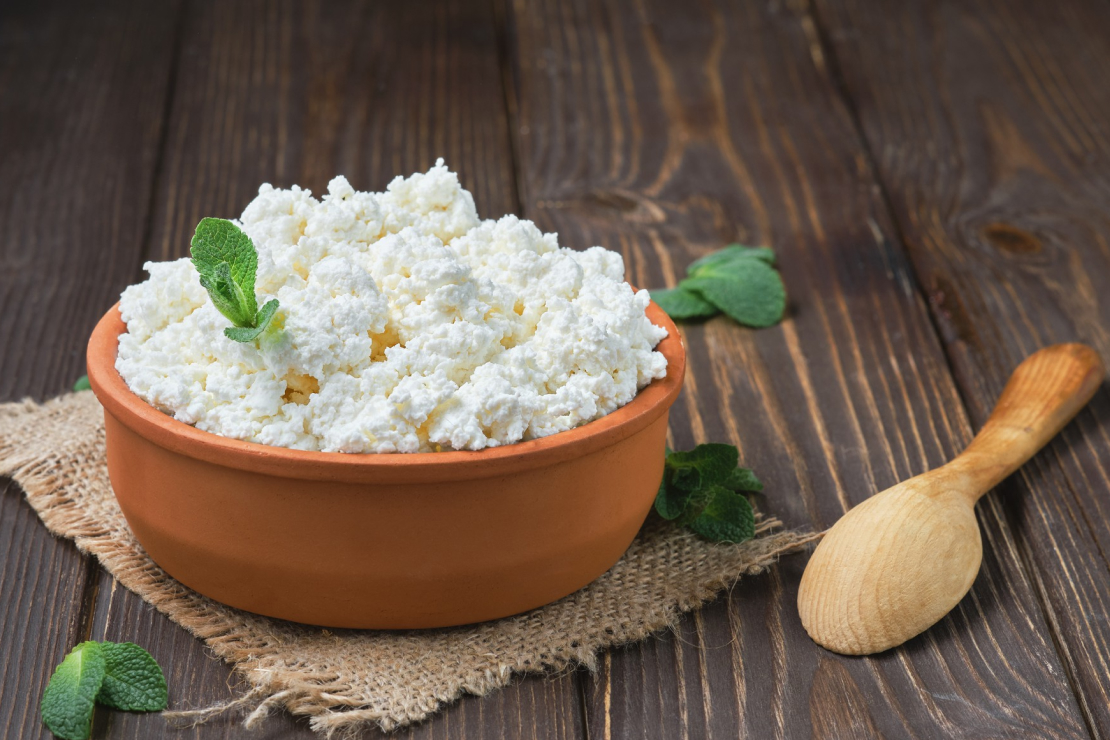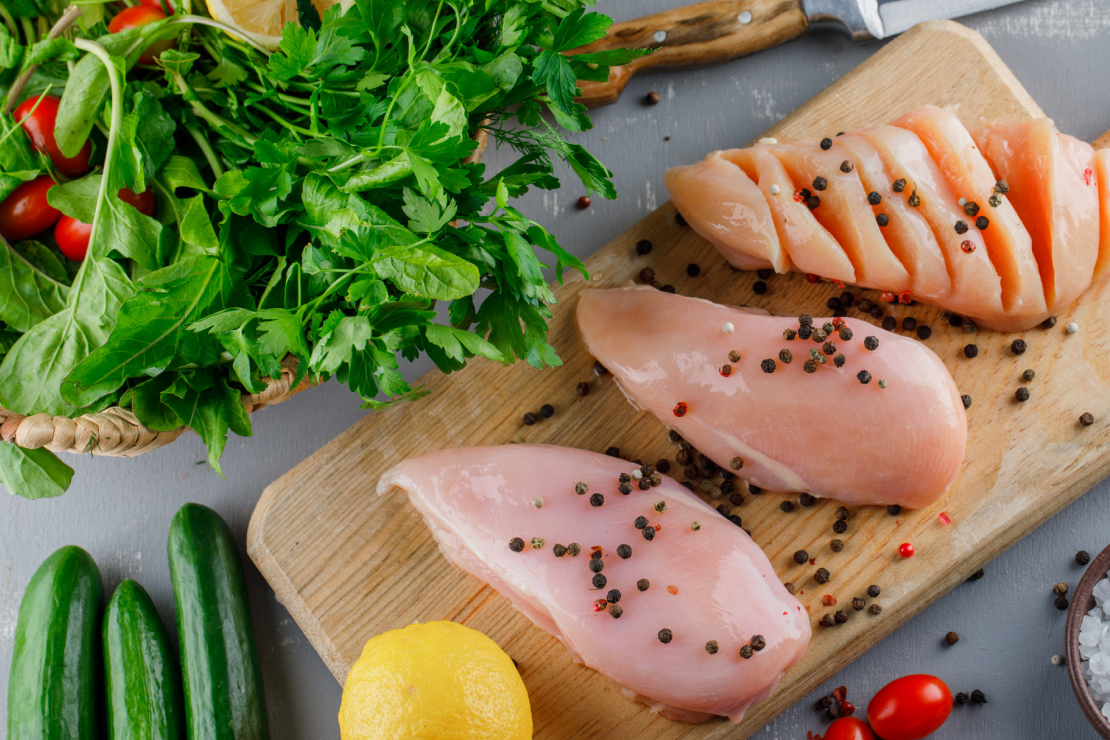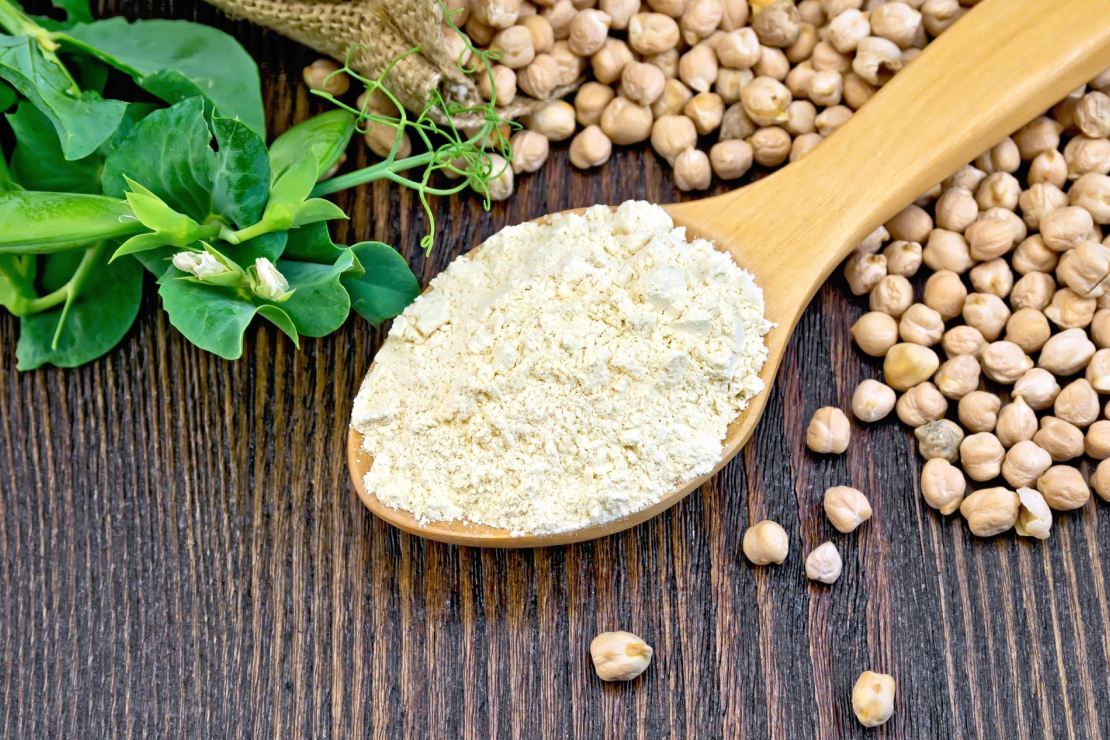Chicken Breast vs. Salmon vs. Lean Ground Beef: The Ultimate Protein for Muscle Growth?
Dive into a comprehensive comparison of chicken breast, salmon, and lean ground beef to determine which protein source reigns supreme for muscle growth, fat loss, and overall health. Discover their nutritional profiles, benefits, and how to best incorporate them into your diet.

Table of Content
Introduction
When it comes to building muscle, losing fat, or simply maintaining a healthy physique, protein is king. But with a plethora of protein sources available, how do you choose the best one for your goals? Chicken breast, salmon, and lean ground beef are three of the most popular and effective options, each bringing its own unique nutritional advantages to the table.
This article dives deep into a head-to-head comparison of these protein powerhouses. We'll break down their macronutrient profiles, essential micronutrients, and specific benefits to help you make an informed decision that aligns with your fitness aspirations and dietary preferences. Whether you're a seasoned bodybuilder, a casual gym-goer, or simply looking to optimize your diet, understanding these differences is crucial.
Let's explore which protein source might be the ultimate choice for your muscle growth journey.
Comparison Overview
| Nutrient (per 100g) | Chicken Breast | Salmon (Atlantic) | Lean Ground Beef (90%) |
|---|---|---|---|
| Calories | 165 kcal | 208 kcal | 250 kcal |
| Protein | 31g | 20g | 26g |
| Fat (Total) | 3.6g | 13g | 15g |
| Saturated Fat | 1g | 3g | 6g |
| Carbohydrates | 0g | 0g | 0g |
| Omega-3 Fatty Acids | Low | High (~2.5g) | Low |
| Iron | Low | Low | High |
| Vitamin B12 | Moderate | High | High |
Evaluation Criteria
- Protein Content & Quality: Amount and completeness of amino acid profile.
- Fat Content & Type: Saturated vs. unsaturated fats, and presence of essential fatty acids like Omega-3s.
- Micronutrient Profile: Vitamins (especially B12) and minerals (like iron).
- Calorie Density: Impact on calorie goals for muscle gain or fat loss.
- Versatility & Cost: Ease of preparation, culinary uses, and affordability.
Chicken Breast: The Lean Muscle Builder
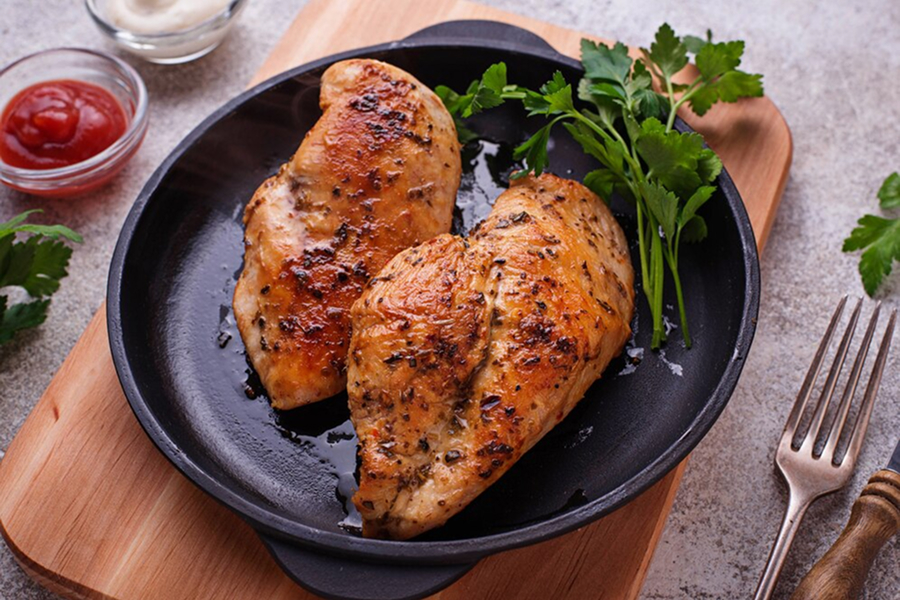
Overview
Chicken breast is a perennial favorite among fitness enthusiasts and those aiming for lean muscle growth and fat loss. Its popularity stems from its incredibly high protein content relative to its low fat and calorie count, making it a cornerstone of many healthy diets.
Key Features
- Extremely high protein-to-calorie ratio
- Very low in fat, especially saturated fat
- Versatile and easy to cook in various ways
- Good source of B vitamins (Niacin, B6)
| Pros | Cons |
|---|---|
|
|
Use Cases
Fat Loss & Calorie Deficit
Its low-calorie, high-protein nature makes it perfect for creating a calorie deficit while preserving muscle.
- Bake, grill, or poach to avoid added fats
- Pair with a large serving of non-starchy vegetables
- Season generously to enhance flavor without extra calories
Meal Prep Staple
Cook a large batch at the start of the week for quick, healthy meals on the go.
- Shred for salads or wraps
- Dice for stir-fries or pasta dishes
- Store in airtight containers for up to 3-4 days
Verdict
Chicken breast is the undisputed champion for those prioritizing lean protein, minimal fat, and calorie control. It's a foundational food for building muscle and shedding fat efficiently.
Salmon: The Omega-3 Powerhouse
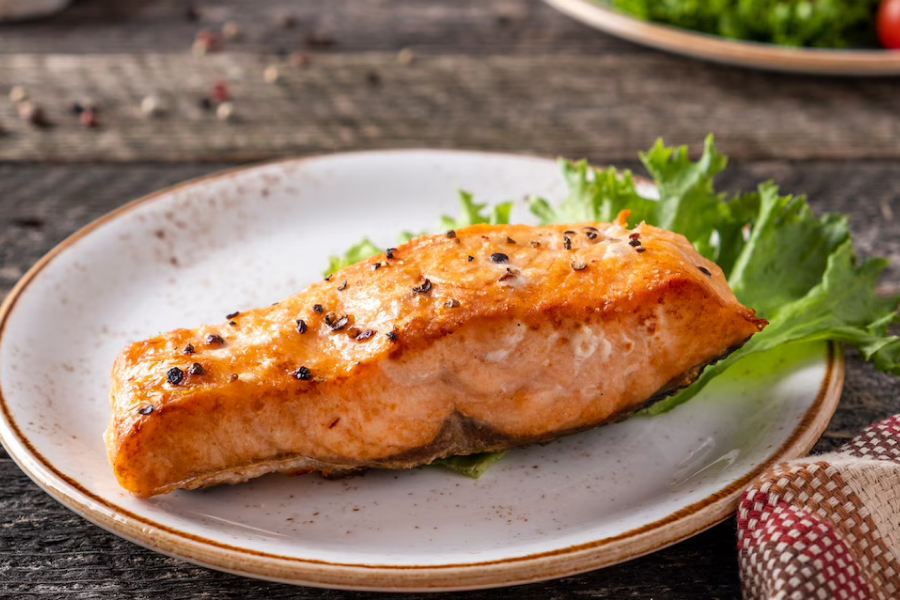
Overview
Salmon is celebrated not just for its delicious flavor but for its exceptional nutritional benefits, particularly its high content of Omega-3 fatty acids. While higher in fat and calories than chicken breast, these are predominantly healthy fats that offer significant advantages for overall health and recovery.
Key Features
- Rich in EPA and DHA Omega-3 fatty acids
- High-quality protein source
- Excellent source of Vitamin D and B12
- Contains antioxidants like Astaxanthin
| Pros | Cons |
|---|---|
|
|
Use Cases
Heart Health & Anti-Inflammation
Regular consumption helps reduce the risk of heart disease and manage inflammatory conditions.
- Aim for 2-3 servings per week
- Pair with colorful vegetables for added antioxidants
- Choose wild-caught when possible for higher Omega-3s
Brain Function & Mood
The Omega-3s in salmon are vital for cognitive health and can help improve mood.
- Incorporate into a balanced diet with other brain-boosting foods
- Enjoy baked, grilled, or pan-seared
- Combine with whole grains and leafy greens
Verdict
For those prioritizing overall health, anti-inflammatory benefits, and essential fatty acids alongside protein, salmon is an unparalleled choice, offering a powerful nutritional punch.
Lean Ground Beef: The Iron & B12 Powerhouse
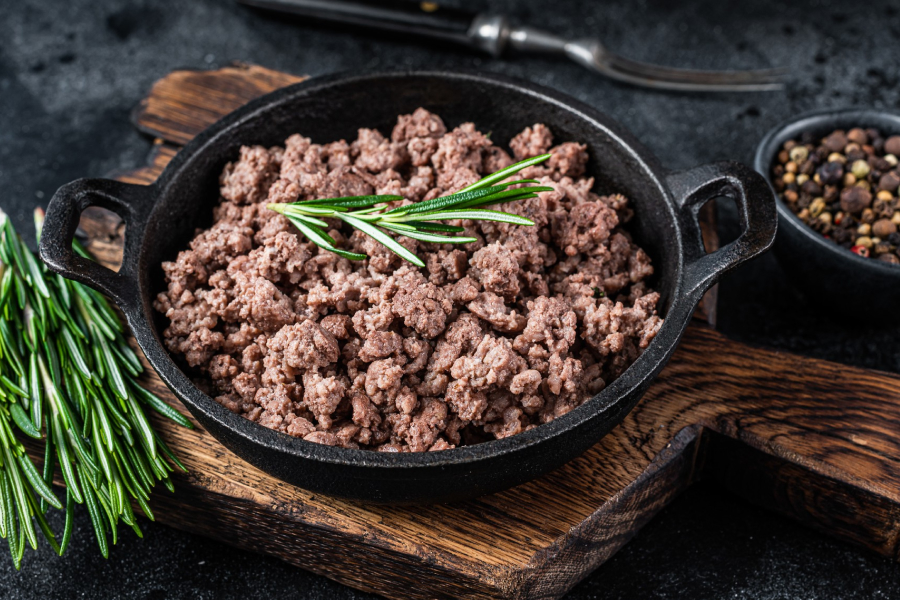
Overview
Lean ground beef is a robust and flavorful protein source, particularly valued for its rich content of heme iron and Vitamin B12. While it typically has a higher fat content than chicken breast, choosing lean varieties (90% or higher) can significantly reduce this, making it a viable option for muscle growth and overall health.
Key Features
- Excellent source of highly bioavailable heme iron
- Rich in Vitamin B12, crucial for energy metabolism
- Good source of zinc and selenium
- Complete protein profile
| Pros | Cons |
|---|---|
|
|
Use Cases
Combating Iron Deficiency
Its heme iron content is easily absorbed, making it ideal for preventing or treating iron deficiency anemia.
- Pair with Vitamin C-rich foods (e.g., bell peppers, tomatoes) to further enhance iron absorption
- Use in stews, tacos, or pasta sauces
- Opt for grass-fed beef for potentially higher nutrient content
Muscle Building & Strength
The combination of protein, iron, and B12 supports muscle repair, growth, and overall strength.
- Choose 90% lean or higher to manage fat intake
- Incorporate into post-workout meals
- Use in hearty dishes like shepherd's pie or meatballs
Verdict
Lean ground beef is an excellent choice for those needing a significant boost in iron and Vitamin B12, offering a satisfying and nutrient-dense option for muscle growth and energy.
Summary
Choosing Your Champion Protein
- For Lean Muscle & Fat Loss: Chicken Breast offers the highest protein-to-calorie ratio with minimal fat, making it ideal for calorie-controlled diets.
- For Overall Health & Recovery: Salmon stands out with its rich Omega-3 content, providing anti-inflammatory benefits crucial for recovery and cardiovascular health.
- For Iron & Energy: Lean Ground Beef is an excellent source of heme iron and Vitamin B12, vital for energy production and preventing deficiencies, especially for active individuals.
Ultimately, the "best" protein source depends on your individual goals, dietary needs, and preferences. A balanced approach often involves incorporating a variety of these proteins to reap the diverse benefits each offers.
| Category | Best Option | Why? |
|---|---|---|
| Highest Protein per Calorie | Chicken Breast | Exceptional protein-to-calorie ratio, ideal for lean muscle gain and fat loss. |
| Omega-3 Powerhouse | Salmon | Rich in EPA and DHA, crucial for heart health, inflammation, and recovery. |
| Iron & B12 Rich | Lean Ground Beef | Excellent source of heme iron and Vitamin B12, vital for energy and red blood cell production. |
| Most Budget-Friendly | Chicken Breast | Generally the most affordable lean protein option. |
| Versatility in Cooking | All | Each offers unique culinary applications, from grilling to stews. |
| Satiety Factor | All | High protein content in all three contributes significantly to fullness. |
| Fat Loss Focus | Chicken Breast | Lowest in fat and calories, making it easiest to fit into a calorie deficit. |
| Overall Health Benefits | Salmon | Omega-3s provide superior cardiovascular and anti-inflammatory benefits. |
Conclusion
The debate over the "ultimate" protein for muscle growth often boils down to individual needs and preferences. Chicken breast excels in lean protein delivery for calorie-conscious goals, salmon provides unparalleled Omega-3 benefits for overall health and recovery, and lean ground beef offers a robust profile of iron and B12 for energy and vitality.
For optimal results, consider a varied approach. Incorporating all three into your diet ensures a broad spectrum of nutrients, supporting not just muscle growth but also cardiovascular health, energy levels, and micronutrient intake. Remember, consistency and proper portion control, often aided by AI-powered tracking tools, are key to maximizing the benefits of any protein source.
"Diversity in your protein sources is as important as the quantity. Each offers unique benefits that contribute to a well-rounded, effective nutrition strategy for muscle growth and overall well-being."
Start Your Health Journey Today
Download Macro Tracking AI and take control of your nutrition with the power of artificial intelligence.
Download on App Store